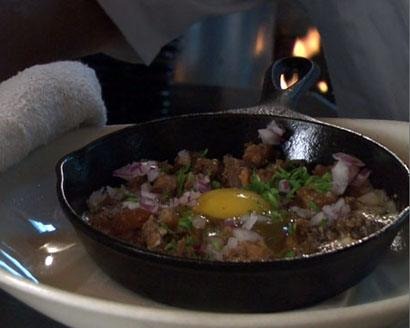How To Eat Filipino Food
When it comes to table manners, froufrou Western etiquette isn't all you need to know. Sure, it's important to know which fork is which, and which wine glass is yours, but you can just watch Pretty Woman for that.
Other cultures have less varied table settings, however. Filipino cuisine, for example, usually only involves a fork and spoon.
Nicole Ponseca of Maharlika Filipino Moderno in New York City sat down with The Daily Meal to walk us through the basic of Filipino table manners, whether it's using a fork and spoon to cut through meat, or whether it's using your hands to eat, which she finds a deeply personal way to eat. "For me, it means I was brought up Filipino," she says.
Filipino food, Ponseca says, if often a mashup of various cultures, whether it's native flavors, Malaysian influences, Chinese, American, or Spanish. At Maharlika, there's Tang and SPAM, as well as soy sauce (Chinese) and longanisa sausage (Spanish). "Filipino food can be described as this: sweet, savory, and salty," Ponseca says. "I often say the flavors are as bold and big as our personalities. If it's salty, it's really salty, and if it's sweet it's got this beautiful sweetness. If it's sour, it's robust. The flavors should not be subltle, but the flavors should balance each other out."
As for a couple of key phrases to know? The national language of the Philippines is Tagalog, although it varies by regions. Say "Salamat" to say thank you, Ponseca says, and "sarap," to say "delicious." "Sarap will get you in the door and keep you coming back for more," she says.
